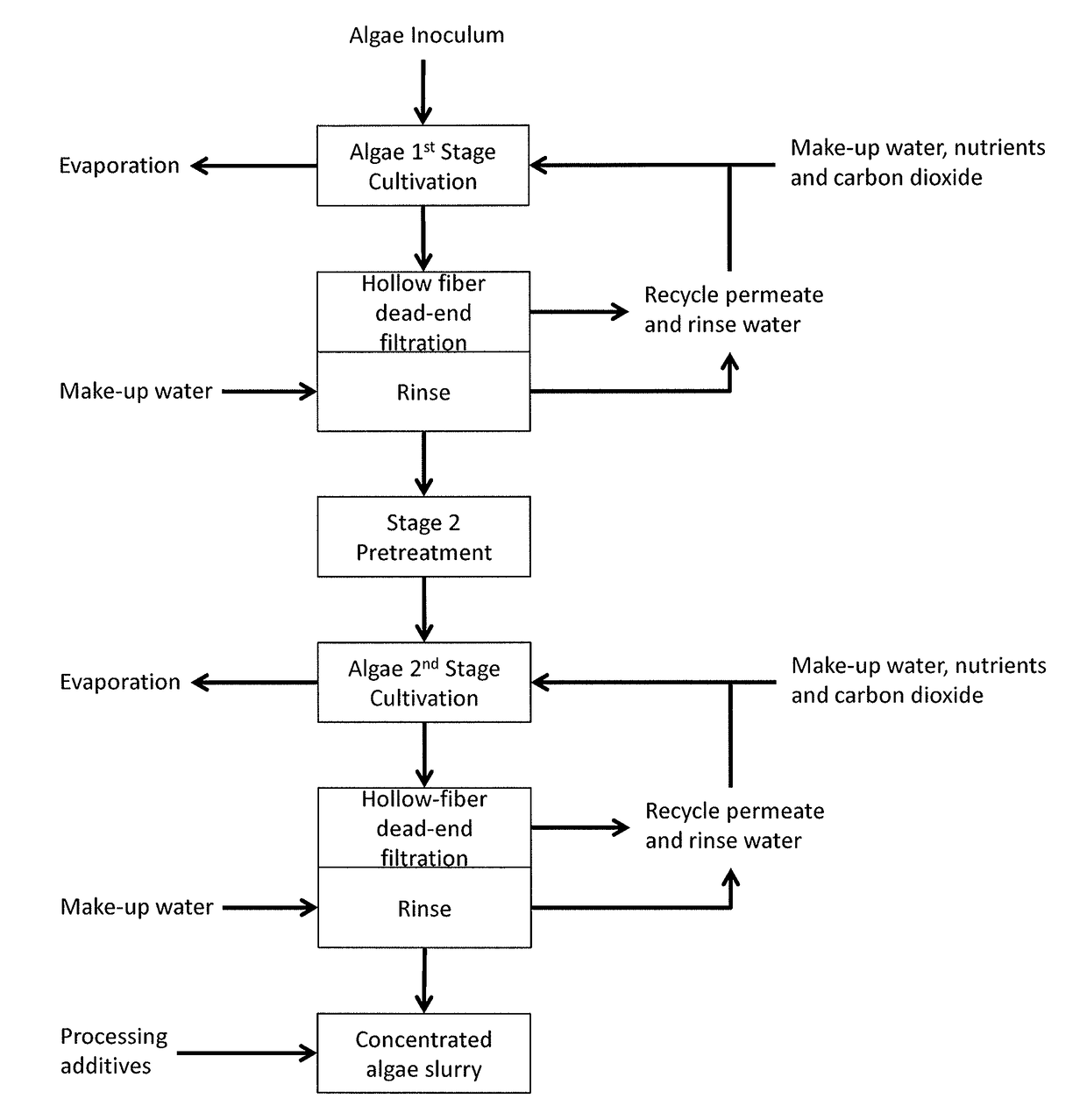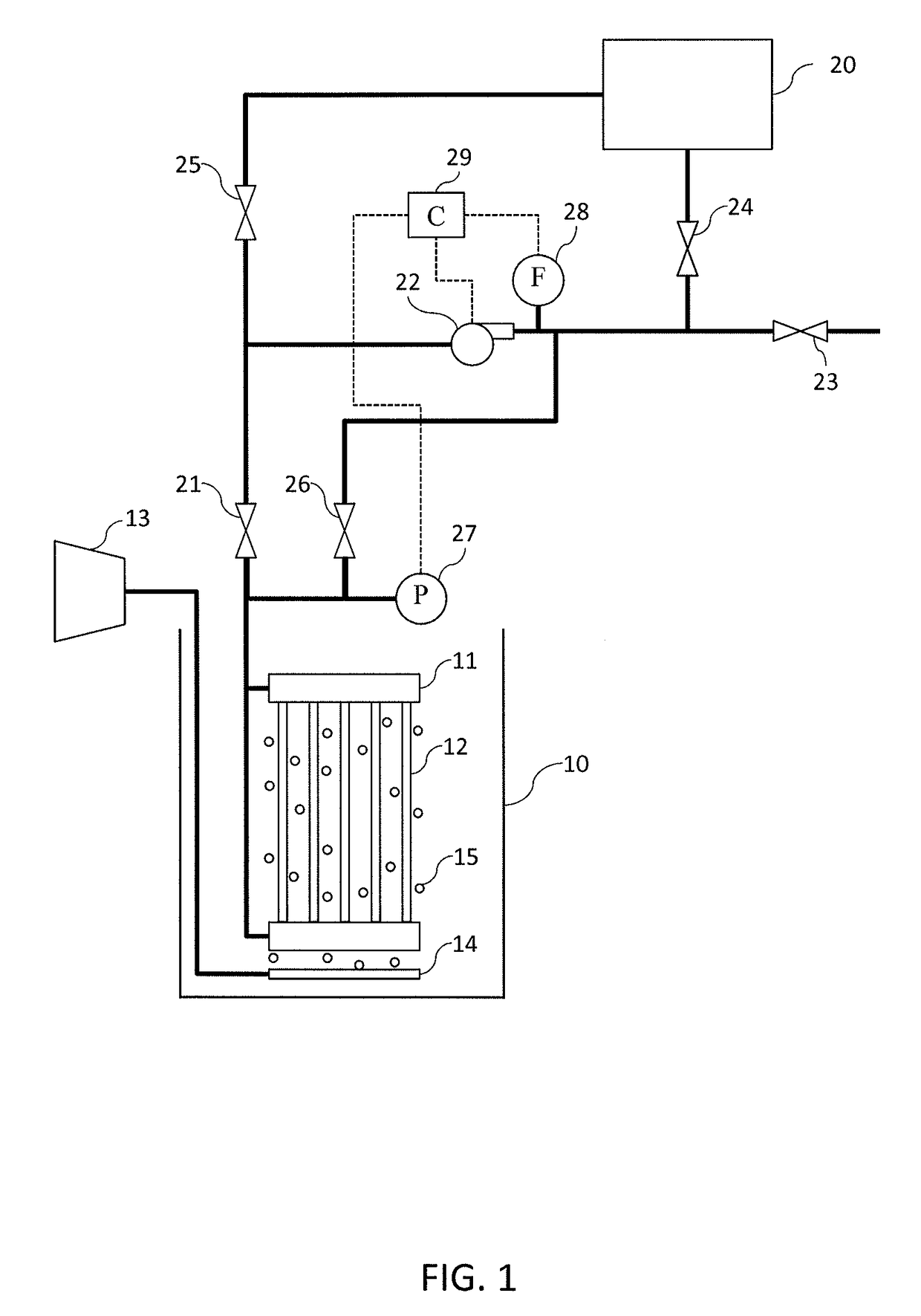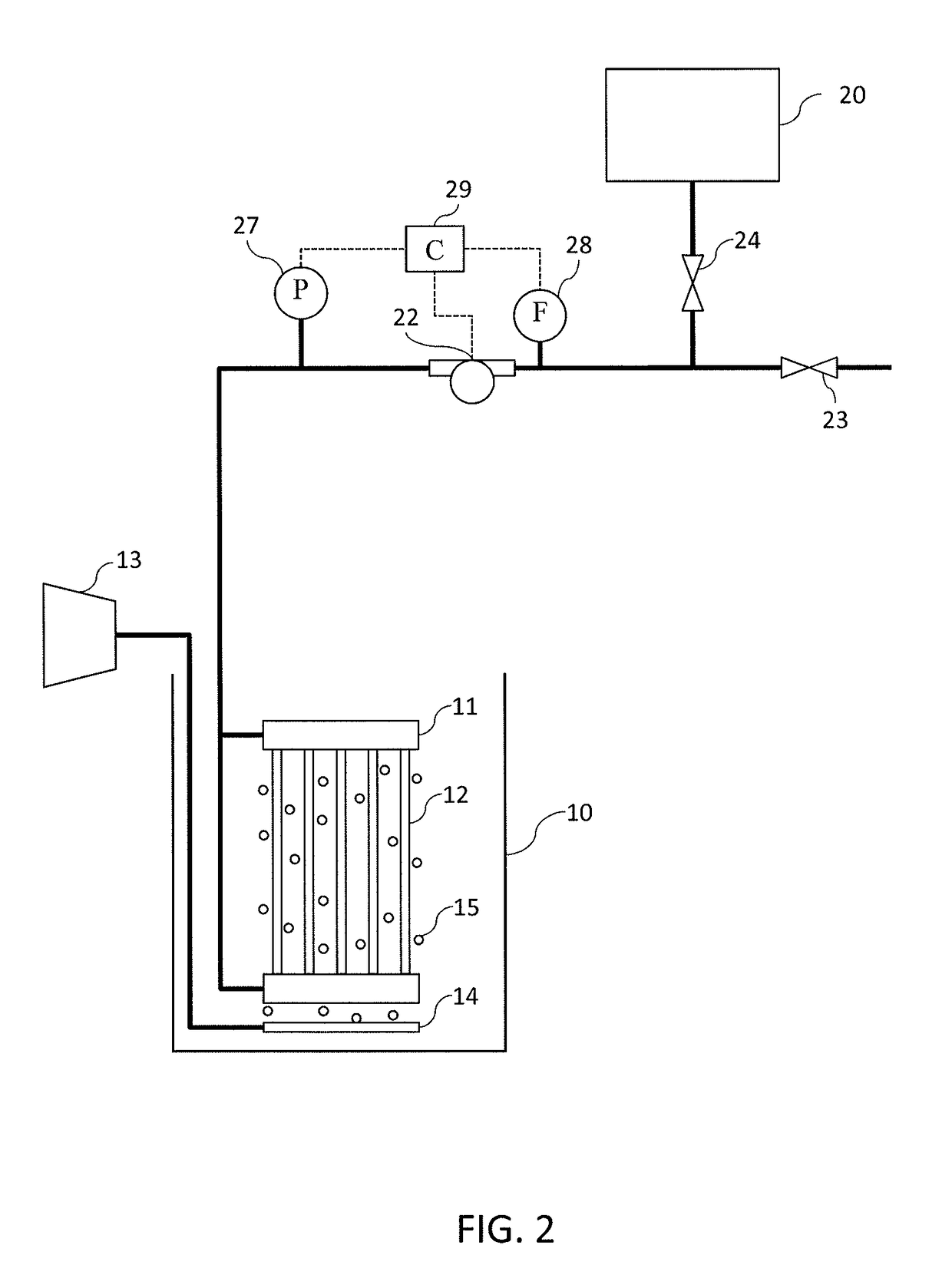Biological and algae harvesting and cultivation systems and methods
a technology of algae harvesting and cultivation, applied in specific use bioreactors/fermenters, biomass after-treatment, membranes, etc., can solve the problems of high capital and operating costs, elusive algae harvesting system low operating costs, and low energy requirements, so as to reduce the complexity and cost of hollow fiber dead-end filtration systems, reduce the cost and complexity of hollow fiber filtration systems, and shorten the backwash off-line period
- Summary
- Abstract
- Description
- Claims
- Application Information
AI Technical Summary
Benefits of technology
Problems solved by technology
Method used
Image
Examples
example 1
[0177]In one example of the present disclosure, it was demonstrated that high concentration solid slurries (e.g., 0.5% to 2%) can be attained using short backwash intervals (e.g., three minutes or less), and shorter backwash off-line periods, and with minimal energy input. For example, in one demonstration, a hollow-fiber dead-end membrane system was operated utilizing a reversing flow pump as illustrated in FIG. 2 so as to filter a 0.08% Chlorella sp. slurry from an open raceway algae cultivation system. The flow pump was fast acting, so the backwash off-line period was only one second longer than the backwash flow period. The system was initially operated under a ten second backwash off-line period and a 15 minute backwash interval. Under these conditions, it was observed that the permeate flux was reduced by 75% with at a volumetric concentration factor (VCF) of 6, i.e., increasing the algae concentration to 0.48%. A shorter backwash interval of eight minutes, with the same backw...
example 2
[0178]In another example of the present disclosure, it was demonstrated, using permeability data, that a shorter backwash period (e.g., three seconds or less) with a very short backwash interval (e.g., one minute), results in a 15 fold increase in the final concentration of a solid slurry in a hollow-fiber dead-end membrane filtration system. In particular, a dead-end hollow fiber filtration system was operated with a reversing flow pump as illustrated in FIG. 2 to filter a 0.08% Chlorella sp. slurry to high concentration, e.g., greater than 3%, from an open raceway algae cultivation system. The pump was again fast acting, so the backwash off-line period was only one second longer than the backwash flow period. When the system was operated at eight minute backwash intervals with a 12 second backwash off-line period, the final VCF of 15 was achieved, i.e., the final retentate algae concentration was 1.2%, which was generally expected for non-flocculated biological slurries. When the ...
example 3
[0179]In another example embodiment, it was demonstrated that there is a significant advantage to a variable flux, decreasing area multistage system over either a single stage system or an equal area, constant flux multistage system. As the concentration of algae slurries increases in a hollow fiber dead-end filtration system, the permeate flux decreases. And achieving a high concentration in a single stage system requires removal of a substantial portion of the permeate at high concentration. For algae harvesting, the algae is typically the product, so the retentate solids concentration is very important. A decreasing area, variable flux system operated according to the embodiment of FIG. 6, for example, results in a large improvement in the average flux for the system compared to typical multistage or to typical single stage systems.
[0180]Table 1 below provides a comparison of the average flux for different system configurations to concentrate algae slurries based upon a permeabil...
PUM
| Property | Measurement | Unit |
|---|---|---|
| surface area | aaaaa | aaaaa |
| actuation time | aaaaa | aaaaa |
| surface area | aaaaa | aaaaa |
Abstract
Description
Claims
Application Information
 Login to View More
Login to View More - R&D
- Intellectual Property
- Life Sciences
- Materials
- Tech Scout
- Unparalleled Data Quality
- Higher Quality Content
- 60% Fewer Hallucinations
Browse by: Latest US Patents, China's latest patents, Technical Efficacy Thesaurus, Application Domain, Technology Topic, Popular Technical Reports.
© 2025 PatSnap. All rights reserved.Legal|Privacy policy|Modern Slavery Act Transparency Statement|Sitemap|About US| Contact US: help@patsnap.com



